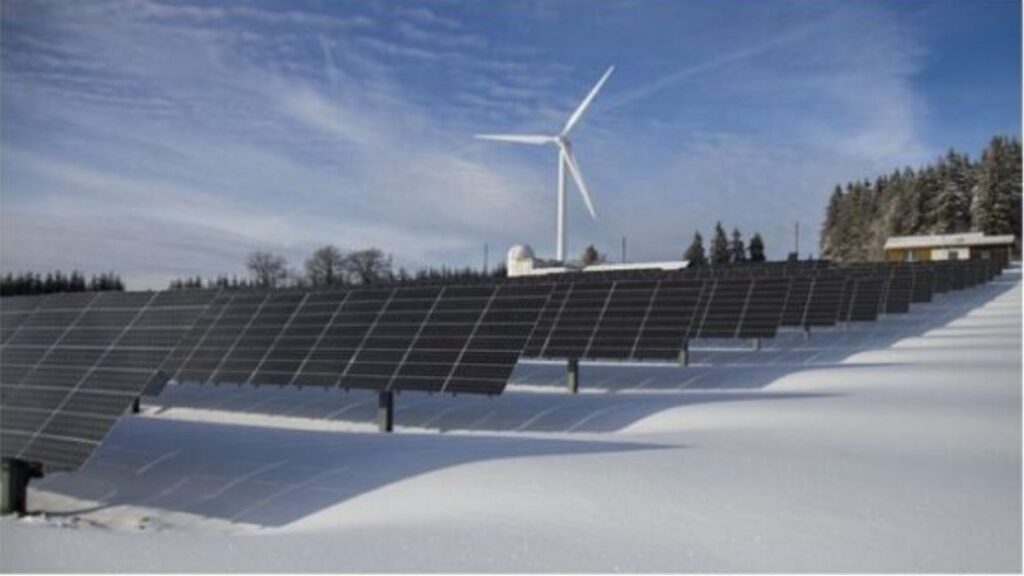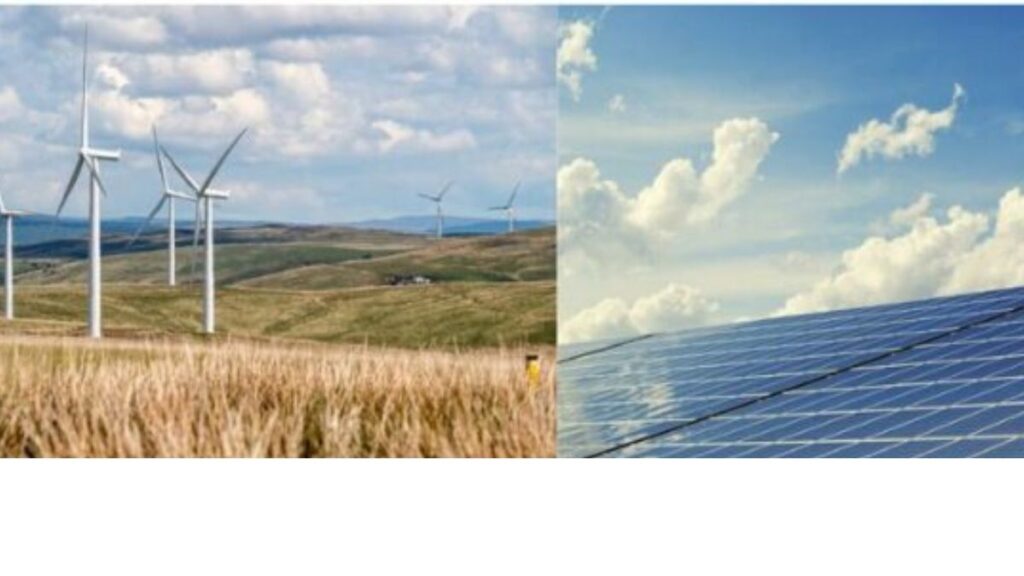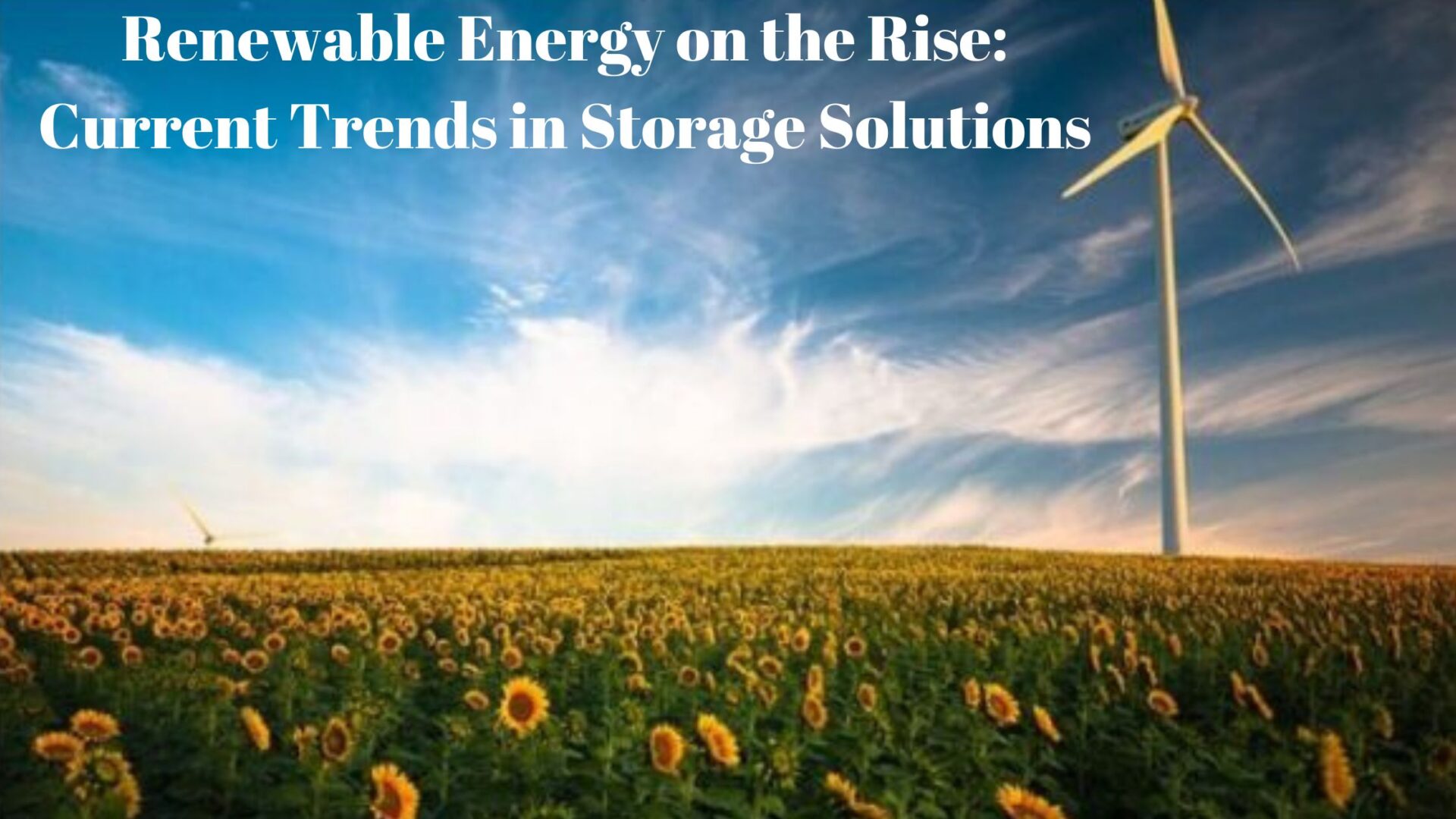Introduction:-
Renewable Energy on the Rise: Current Trends in Storage Solutions

In the dynamic landscape of renewable energy, the focus is not only on harnessing sustainable power sources but also on effectively storing that energy for consistent, reliable use. This article will navigate through the current trends in renewable energy storage, showcasing innovations that are propelling the industry forward.
Renewable Energy on the Rise
1. Battery Breakthroughs
Recent advancements in battery technology have revolutionized the renewable energy sector. From lithium-ion to flow batteries, explore the breakthroughs that are making energy storage more efficient, durable, and cost-effective.
2. Grid-Scale Storage Solutions
As renewable energy becomes more integrated into the power grid, grid-scale storage solutions are gaining prominence. Discover how large-scale battery installations and innovative grid management systems are ensuring a seamless and reliable energy supply.
3. Hydrogen as an Energy Carrier
The rise of green hydrogen as an energy carrier is a game-changer. Dive into the potential of using hydrogen for energy storage and transportation, unraveling its role in a sustainable energy future.
4. Advanced Thermal Energy Storage
Explore the world of advanced thermal energy storage, where technologies like molten salt and phase-change materials are being employed to store and release energy efficiently. Learn how these systems contribute to grid stability and resilience.
5. Artificial Intelligence in Energy Management
Artificial intelligence (AI) is playing a pivotal role in optimizing renewable energy storage. Understand how AI-driven algorithms analyze data, predict energy demand, and enhance the overall performance of storage systems.
6. Community Energy Storage
Community-centric approaches to energy storage are gaining traction. Delve into the concept of community energy storage projects, where shared resources contribute to sustainable and resilient local power systems.
7. Repurposing Electric Vehicle Batteries
With the rise of electric vehicles (EVs), repurposing used EV batteries for stationary energy storage is becoming a trend. Explore how these batteries find a second life, reducing waste and enhancing the sustainability of energy storage solutions.
8. Blockchain for Energy Trading
Blockchain technology is reshaping the landscape of renewable energy storage by enabling transparent and decentralized energy trading. Uncover the potential of blockchain in creating efficient and secure peer-to-peer energy transactions.
9. Flexible and Modular Storage Systems
The demand for flexibility in energy storage solutions is driving the development of modular systems. Discover how these adaptable storage configurations cater to varying energy needs, providing a scalable and customizable approach.
10. Policy and Investment Influences
Explore the role of government policies and private investments in shaping the renewable energy storage sector. Stay informed about the incentives, regulations, and funding initiatives that contribute to the growth and sustainability of the industry.
What are the trends in renewable energy in India?
As of my last knowledge update in January 2022, the renewable energy sector in India has been experiencing significant growth and evolving trends. Keep in mind that developments in the sector may have occurred since then. Here are some trends in renewable energy in India:
- Solar Power Dominance:
- Solar energy continues to dominate the renewable energy landscape in India. The country has made substantial investments in solar projects, both large-scale and distributed, contributing to a substantial portion of the renewable energy capacity.
- Increasing Wind Power Capacity:
- Wind energy has been a traditional source of renewable power in India. The country has been consistently increasing its wind power capacity, with the installation of both onshore and offshore wind projects.
- Hybrid Renewable Energy Projects:
- The integration of solar and wind in hybrid projects has gained momentum. These projects aim to optimize energy generation by leveraging the complementary nature of solar and wind resources.
- Energy Storage Solutions:
- There is a growing emphasis on energy storage solutions to address the intermittency of renewable sources. Battery storage projects are gaining traction, providing grid stability and enabling better utilization of renewable energy.
- Floating Solar Farms:
- India has been exploring the potential of floating solar farms, especially on water bodies like reservoirs. This innovative approach addresses land constraints and allows for efficient use of available resources.
- Green Hydrogen Initiatives:
- Green hydrogen has emerged as a key focus area. Various pilot projects and initiatives are underway to explore the production and utilization of green hydrogen as a clean fuel.
- Electric Vehicles (EVs) and Charging Infrastructure:
- The adoption of electric vehicles is on the rise in India. This trend is driving the development of charging infrastructure powered by renewable energy sources, promoting sustainable transportation.
- Government Initiatives and Policies:
- Government initiatives and policies play a crucial role in shaping the renewable energy landscape. Programs such as the National Solar Mission and various state-level policies encourage the growth of renewable energy projects.
- Private Sector Investments:
- Private sector investments are contributing significantly to the expansion of renewable energy capacity. Both domestic and international companies are investing in wind, solar, and other clean energy projects.
- Decentralized Energy Systems:
- There is a shift towards decentralized energy systems, including off-grid and microgrid solutions. These systems play a vital role in providing electricity to remote areas and enhancing energy access.
It’s essential to stay updated with the latest developments, as the renewable energy sector is dynamic, and new trends may emerge. Government policies, technological advancements, and market dynamics will continue to shape the future of renewable energy in India.
What is the latest battery storage technology?

As of my last knowledge update in January 2022, several emerging battery storage technologies have shown promise in enhancing energy storage capacity, efficiency, and sustainability. However, it’s important to note that the field of battery storage is rapidly evolving, and there may have been further advancements since then. Here are some of the latest battery storage technologies as of my last update:
- Solid-State Batteries:
- Solid-state batteries use solid electrolytes instead of liquid electrolytes, offering higher energy density, longer lifespan, and improved safety. They have the potential to replace traditional lithium-ion batteries in various applications.
- Lithium-Sulfur Batteries:
- Lithium-sulfur batteries aim to improve energy density by using sulfur as a cathode material. These batteries have the potential to offer higher capacity, making them suitable for applications requiring lightweight and high-energy storage.
- Flow Batteries:
- Flow batteries store energy in liquid electrolytes contained in external tanks. They can be scaled up easily, making them suitable for large-scale energy storage applications. Vanadium redox flow batteries are one example of this technology.
- Graphene-Based Batteries:
- Batteries incorporating graphene, a form of carbon with exceptional conductivity, are being explored for their potential to enhance energy storage, charging speed, and overall performance.
- Hybrid Battery Systems:
- Combining different types of batteries, such as lithium-ion and lead-acid, in a hybrid system aims to capitalize on the strengths of each technology, providing a balanced solution with improved efficiency and performance.
- Aluminum-Ion Batteries:
- Aluminum-ion batteries are being researched as an alternative to lithium-ion batteries. They offer the advantage of using more abundant materials, potentially reducing costs and environmental impact.
- Zinc-Air Batteries:
- Zinc-air batteries use oxygen from the air as the cathode material, making them lighter and potentially less expensive. These batteries are being explored for applications like electric vehicles and grid storage.
- Advanced Thermal Energy Storage:
- Thermal energy storage systems, including advanced materials like phase-change materials and molten salt, are being integrated with batteries to improve overall efficiency and thermal management.
- Quantum Batteries:
- Quantum batteries, a theoretical concept, involve the application of quantum physics principles to enhance energy storage. While still in the early stages of research, quantum batteries hold potential for groundbreaking advancements.
- Self-Healing Batteries:
- Self-healing battery technologies aim to extend the lifespan of batteries by repairing damage within the battery structure. This could lead to longer-lasting and more reliable energy storage solutions.
It’s crucial to stay updated on the latest developments in battery storage technology, as ongoing research and innovation continue to shape the future of energy storage solutions. Additionally, advancements in energy storage are often influenced by factors such as material science breakthroughs, government funding, and market demands.
In conclusion,
the rise of renewable energy is intricately linked with the evolution of storage solutions. By staying abreast of these current trends, we pave the way for a greener, more sustainable energy future. Stay tuned for more updates on the ever-evolving landscape of renewable energy storage.
FAQs:
- What are renewable energy storage solutions? Renewable energy storage solutions refer to technologies and systems designed to store energy generated from renewable sources such as solar, wind, hydro, and geothermal power. These solutions help address the intermittency of renewable energy generation by storing excess energy when it’s available and releasing it when needed.
- Why are storage solutions important for renewable energy? Storage solutions are crucial for renewable energy because they enable better integration of variable energy sources into the power grid. They help stabilize the grid, improve energy reliability, and facilitate the transition to a cleaner and more sustainable energy system by ensuring energy is available when demand is high or when renewable sources are not actively generating power.
- What are some common types of renewable energy storage technologies? Common renewable energy storage technologies include battery storage (such as lithium-ion batteries), pumped hydro storage, compressed air energy storage, flywheel energy storage, thermal energy storage, and hydrogen storage. Each technology has its advantages and applications depending on factors like scale, cost, and geographical considerations.
- What are the benefits of renewable energy storage solutions? Renewable energy storage solutions offer several benefits, including reducing reliance on fossil fuels, mitigating greenhouse gas emissions, enhancing grid stability and resilience, supporting the growth of renewable energy sources, and providing energy access to remote or off-grid areas.
- Are there any challenges associated with renewable energy storage? Challenges associated with renewable energy storage include high upfront costs, limited scalability of certain technologies, efficiency losses during energy conversion and storage, permitting and regulatory hurdles, and the need for continued innovation to improve performance and reduce costs.
References:
- Zakeri, Behnam, and Seyed M. Islam. “Energy storage systems in modern grid applications.” IEEE Access 6 (2018): 11540-11559.
- Luo, Xing, et al. “Overview of current development in electrical energy storage technologies and the application potential in power system operation.” Applied Energy 137 (2015): 511-536.
- International Renewable Energy Agency (IRENA). “Electricity Storage and Renewables: Costs and Markets to 2030.” 2017.
- US Department of Energy. “Energy Storage Grand Challenge.” [Online] Available: https://www.energy.gov/energy-storage-grand-challenge. Accessed on: May 12, 2024.
- Fattah, Kazi M.S., et al. “A review on flywheel energy storage system.” International Journal of Energy Research 42.12 (2018): 3721-3745.







